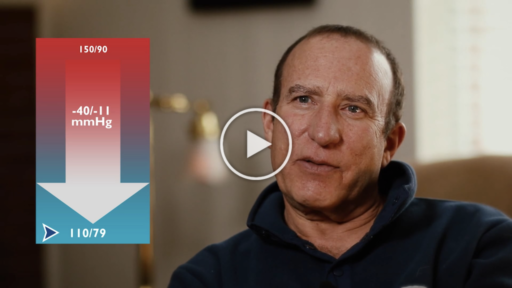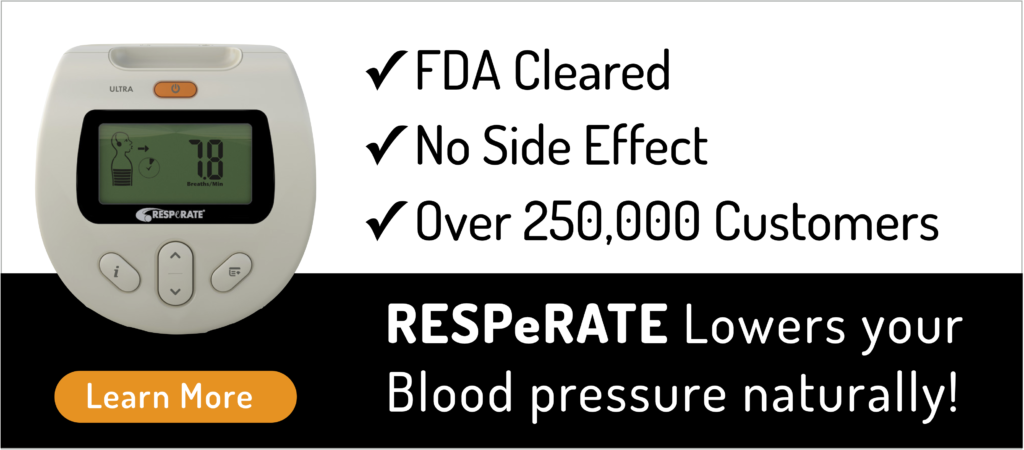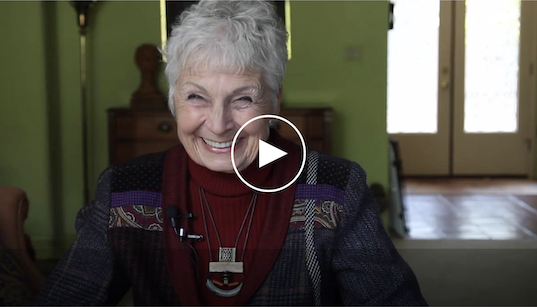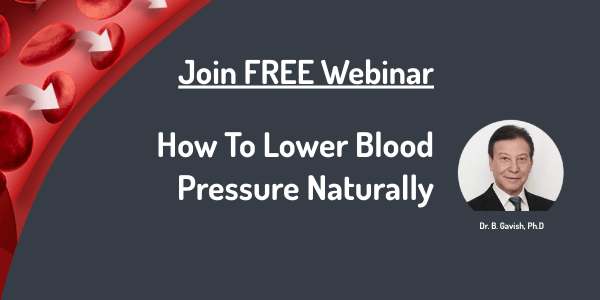Time To Lower Your High Blood Pressure
Lower your blood pressure in 6 weeks? Sounds like a fantasy. But it isn’t. Last week I discussed the importance of lifestyle changes. This week we have a battle plan in place. Many physicians like, Joel Fuhrman M.D, Michael Greger M.D, and Caldwell Esselstyn M.D attest to the power of food. By eating the correct foods people have reversed diabetes, heart disease, high blood pressure, and the like. Are you ready to take responsibility for your health? Then let us begin.
What if you had the chance to lower your blood pressure to normal levels in 2 weeks without medication? What if by following the regimen your had your medication drastically reduce? Tell me would you be willing to do what you had to, to lower your blood pressure? Some of you would. The sad reality is that most people would not. They would rather pop a pill and hope for the best.
The New Start Lifestyle
A new dietary regimen has broken the horizon with the amazing results that participants of the study have experienced. A program called “New Start Lifestyle” developed by M. Alfredo, the associate professor at the Department of Public Health, Nutrition & Wellness at Andrews University in Michigan, along with his team of researchers.
NEWSTART program is a physician monitored, scientifically researched lifestyle change program based on eight fundamental principles proven to help you achieve optimum health: Nutrition, Exercise, Water, Sunlight, Temperance, Air, Rest and Trust. This health recovery program is designed to prevent and reverse disease through natural methods.
The program will not only help in lowering blood pressure, but will also assist in reducing neuropathy, rejuvenate the immune system, increase energy levels, reverse heart disease, and assist patients in overcoming depression.
During Meija’s study, 117 patients diagnosed with high blood pressure underwent two weeks of lifestyle intervention. The program included a whole-food, plant-based diet involving fruit, vegetables, whole grains, legumes, nuts, and seeds that centered around foods rich in potassium. The study’s participants also ensured to sleep adequately, drink sufficient water, and exercise regularly.
What Were The Results?
In just two weeks, half of the participants reduced their blood pressure to the recommended level without medication or other medical devices. Ninety-three percent of participants were able to reduce or eliminate their blood pressure medicine following the two-week period because of drastically reduced blood pressure levels.
These results are equivalent to the effects of standard blood pressure medications. In all, 93 percent of the participants were able to reduce their dose or eliminate medications entirely.
While it requires a substantial amount of willpower, making lifestyle changes should always be first and foremost for people who want to lower their blood pressure.
According to Dr. Andrew Freeman, a cardiologist at National Jewish Health in Colorado, says the findings make plenty of sense.
Exercise A Lifestyle Choice
“Exercise, particularly cardio and aerobic exercise, has been known to be a potent dropper of blood pressure for a long time, and we know that fruits and vegetables rich in potassium and naturally occurring nitrates can actually lower blood pressure as effectively as many of the medications,” he said. “So that, to me, is no surprise. It’s nice that they put it all together in this study.”
Freeman says that for many patients, the prospect of taking a simple medication is seen as easier and more appealing than undergoing lifestyle changes.
But even for patients who are prescribed medications for high blood pressure, lifestyle will always be a factor.
Sometimes, it isn’t just patients who gloss over lifestyle changes — it’s doctors as well.
Freeman points to a 2017 study that he co-authored in which 90 percent of the more than 900 cardiologists surveyed reported that they’d received no or minimal nutrition education during their training.
A recent meta-analysis showed vegetarian diets are good, but strictly plant-based diets may be better. In general, vegetarian diets provide protection against cardiovascular diseases, some cancers, and even death. But, completely plant-based diets seem to offer additional protection against obesity, hypertension, type-2 diabetes, and heart disease mortality. Based on a study of more than 89,000 people, those eating meat-free diets appear to cut their risk of high blood pressure in half. But, those eating meat-free, egg-free, and dairy-free may have 75% lower risk.
Watch How Mark Lowered His Blood Pressure Naturally. It was 150/100, this morning it was 110/79 Watch Video
The Game Changing Diet & How To Start
The program revolves around following a vegan diet with primarily plant-based foods such as fruits and vegetables, legumes, whole grains, seeds, and nuts.
Before we continue, there are many people who see this as some kind of hug trees and animals propaganda. Yes, I have been accused of dispensing this to the masses. Look I love animals but my primary concern is my health and yours. You can research this until the cows come home, no pun intended, but there is enough research to prove that this does work. If you’re a neigh-sayer, neigh somewhere else please.
Transitioning to a vegan diet is one of the most beneficial things you’ll ever do for yourself and the entire planet, but is it as easy as people make it sound? Yes! I understand it can be intimidating transitioning to a vegan diet after being an omnivore your entire life. I grew up in Upstate New York, where regular meals included pork, chicken, eggs, dairy, or beef at every single meal (if not more than one of those options). Yes, I know. Sad to say, but true.
Some Tips For Getting Started
- When you’re learning to transition to a vegan diet, remember not to overwhelm yourself or feel like every meal has to be complicated or cooked gourmet style. Just take it day by day and even better, meal by meal. There’s no need to be stressed or intimidated by going vegan. In fact, the simpler your meals, the better they are for you.
- I grew up thinking that if there wasn’t meat at a meal, I’d be left eating salad and steamed broccoli. Little did I know just how incredibly tasty and creative vegan meals could be! I started looking up vegan recipes on the web and quickly found inspiration and ideas for ingredients. This was key to my success and one of the first things I tell others to do too. Some of my favorite vegan recipes can be found on the Recipe Monster channel.
- Keep your end goal in mind, but go at your own pace. Some people manage to go vegan overnight and if that’s the right approach for you, fantastic. But don’t be concerned if you feel you need more time. Like any other lifestyle change, going vegan not only takes getting used to, but it takes time to determine what will work best for you. It’s not a one size fits all experience and there are numerous approaches you can take.
- Make sure you don’t miss out on essential nutrients. Just because you’re vegan that doesn’t mean you’re 100% healthy, as there are vegan versions of almost every type of junk food you can think of. As long as you eat a wide variety of tasty plant foods, planning a healthy diet that incorporates all the vitamins and nutrients you need will be a breeze.
- Treat your taste buds to new foods and new flavors. Leaving your food comfort zone will take you on a voyage of discovery of new cuisines. There are thousands of vegan recipes out there from every corner of the globe. Whatever your culinary preference, you’ll encounter amazing new dishes and interesting variations on your old favorites. Yet you don’t have to be an award-winning chef to achieve this. You’ll be pleasantly surprised by the number of meals you can easily prepare from things already in your kitchen or local supermarket ingredients.
- Dont give up. If you believe in yourself, vegan living will soon become second nature. There is always a better reason to stick with your decision than to go against it. If you’re having issues with friends or family, don’t give up: our sections on socializing and solutions to these problems can give you some advice. Remember, there are lots of vegan groups online and off that you can join.
What Am I Allowed To Eat?
A popular myth is that vegans subsist only on soybeans and salad. In reality, vegans eat everything non-vegans eat, but without the animal products and likely with more variety from special foods.
Spend some time with a vegan and you may be surprised to learn a vegan’s diet is not just the standard diet minus animal products. There are several kinds of foods which have gained recognition as vegan staples.
Tempeh (“tem-pea” or “tem-pay”) is like tofu, but fermented and pressed to be thick and savory. An easy way to prepare tempeh is to fry or grill with blended seasonings meant for grilling. Check your ingredients, of course, but surprisingly many are vegan.
Tofu is a solid food made from pressed soybean curd. It’s one of the most unusual vegan staples in that it can be used to make a breakfast dish like scrambled tofu, a dinner dish like Sriracha peanut butter fried tofu, or even a chocolate mousse dessert.
Seitan is a chewy and naturally brown substance made from wheat gluten, an isolated protein found in wheat. Seitan is usually cut into strips and baked or fried to provide some protein and chewiness to a dish. I like getting the large chunkier pieces for making beef stew.
Nutritional yeast is very different from the yeast used in bread. Nutritional yeast, which comes powdered or in flakes, is most often used to provide a cheesy consistency. Unlike cheese, nutritional yeast also lasts far longer and has no cholesterol. Sprinkle in soup, on popcorn, or add water to make cheesy sauces.
Fruits And Vegetables Protect Against Disease
Vegetables and fruit contain phytochemicals or plant chemicals. These biologically active substances can help to protect you from some diseases. Scientific research shows that if you regularly eat lots of fruit and vegetables, you have a lower risk of:
- Type 2 diabetes
- Stroke
- Heart (cardiovascular) disease – when fruits and vegetables are eaten as food, not taken as supplements
- Cancer – some forms of cancer, later in life
- High blood pressure (hypertension).
Types Of Fruits
Fruit is the sweet, fleshy, edible part of a plant. It generally contains seeds. Fruits are usually eaten raw, although some varieties can be cooked. They come in a wide variety of colors, shapes, and flavors. Common types of fruits that are readily available include:
- Apples and pears
- Citrus – oranges, grapefruits, mandarins, and limes
- Stone fruit – nectarines, apricots, peaches, and plums
- Tropical and exotic – bananas and mangoes
- Berries – strawberries, raspberries, blueberries, kiwifruit, and passionfruit
- Melons – watermelons, rockmelons, and honeydew melons
- Tomatoes and avocados.
This is only a small snapshot of what is available. Break each category into the different varieties and you would be overwhelmed by the choices you have.
Types Of Vegetables
Vegetables are available in many varieties and can be classified into biological groups or ‘families’, including:
- Leafy green – lettuce, spinach and silverbeet
- Cruciferous – cabbage, cauliflower, Brussels sprouts and broccoli
- Marrow – pumpkin, cucumber, and zucchini
- Root – potato, sweet potato, and yam
- Edible plant stem – celery and asparagus
- Allium – onion, garlic, and shallot.
Types Of Legumes
Legumes or pulses contain nutrients that are especially valuable. Legumes need to be cooked before they are eaten – this improves their nutritional quality, aids digestion and eliminates any harmful toxins. Legumes come in many forms including:
- Soy products – tofu (bean curd) and soybeans
- Legume flours – chickpea flour (besan), lentil flour and soy flour
- Dried beans and peas – haricot beans, red kidney beans, chickpeas, and lentils
- Fresh beans and peas – green peas, green beans, butter beans, broad beans and snow peas.
Colors Of Fruits And Veggies
You will get the most health benefits and protection against disease if you eat a wide variety of fruits and vegetables. The dietary guidelines recommend that adults eat at least five kinds of vegetable and two kinds of fruit every day.
Foods of similar colors generally contain similar protective compounds. Try to eat a rainbow of colorful fruits and vegetables every day to get the full range of health benefits. For example:
Red foods – like tomatoes and watermelon. These contain lycopene, which is thought to be important for fighting prostate cancer and heart disease.
Green vegetables – like spinach and kale. These contain lutein and zeaxanthin, which may help protect against age-related eye disease.
Blue and purple foods – like blueberries and eggplant. These contain anthocyanins, which may help protect the body from cancer.
White foods – like cauliflower. These contain sulforaphane and may also help protect against some cancers.
How To Select Your Fruits And Veggies
To maximize nutrients and appeal, buy and serve different types of fruit and vegetables. Try to buy fruits and vegetables that are in season, and choose for freshness and quality. You should:
- Eat with the seasons – this is nature’s way of making sure our bodies get a healthy mix of nutrients and plant chemicals.
- Try something new – try new recipes and buy new fruit or vegetables as part of your weekly shopping.
- Let colors guide you – get different combinations of nutrients by putting a ‘rainbow’ of colors (green, white, yellow-orange, blue-purple, red) on your plate.
Saying Nuts To Heart Disease
Eating nuts as part of a healthy diet may be good for your heart. Nuts contain unsaturated fatty acids and other nutrients. And they’re a great snack food — inexpensive, easy to store and easy to pack when you’re on the go.
One drawback to nuts is that they’re high in calories, so it’s important to limit portions. But choosing nuts instead of a less healthy snack may just help you stick to a heart-healthy diet.
- Walnuts- Walnuts are probably the best nut for your heart health. The unsaturated fat found in walnuts – omega-3 fatty acids may help in preventing the development of erratic heart rhythms. Omega-3 fatty acids may also prevent blood clots. Moreover, walnut kernels are known to contain double the amount of antioxidant content than other nuts.
- Pistachios: A study carried out by Diabetes Foundation of India (DFI) and the National Diabetes, Obesity and Cholesterol Foundation shows that pistachios have beneficial effects on glycemic and lipid parameters. Pistachios have a low glycemic index, are naturally cholesterol free, and are good sources of protein, fiber, and antioxidants. These qualities make them great for preventing the risk of obesity and heart disease.
- Almonds: Almond is one healthy nutty delight. Regular consumption of almonds has been linked to lowering LDL (bad) cholesterol levels in innumerable studies. They are rich in monounsaturated fats, fiber, phytosterols, plant protein, tocopherol, arginine, magnesium, copper, manganese, calcium, and potassium makes them heart protective. Arginine, found in almonds, is a type of an amino acid that is required to make a molecule called nitric oxide which is known to relax constricted blood vessels and ease the flow of blood.
Why Do We Crave Junk Food?
There are a few reasons behind that. First, junk foods have a lot of sugar. We customarily associate the word ‘sugar’ with the white powdery stuff (or tiny crystals) that we put in tea, milk and a bunch of other foods to make them sweet, but that white powder is actually only one type of sugar called sucrose. There are many other types of sugar too, which may or may not be sweet in taste (but most of them are).
Junk foods contain a lot of added sugars, a ton of calories, and a sizable amount of trans and saturated fats. Furthermore, they are low in vitamins, minerals and fiber content. Deep-fried foods taste better than bland foods, and as we grow up, we tend to get ‘hooked’ on these foods.
These kinds of sugar-laden, fatty foods cause the brain to release certain neurotransmitters, called dopamine and oxytocin, which induce the feeling of relaxation, pleasure, and enjoyment in an individual. That’s why such foods (that are high in sugar and fats, like cakes, pastries, burgers etc.) are called ‘comfort foods’.
How To Make Healthy Food Choices
The food we put into our bodies is our fuel. It provides us with nutrients—the vitamins, minerals, and other compounds our bodies need to function and thrive. Research shows that good food choices are especially important for children’s growing bodies and minds. Smart choices have both immediate and long-lasting benefits for you and your family.
The trick to making better food choices is learning how to “trade up”—nutritionally speaking. Look at the foods you’re currently eating and see if you can find some healthier choices to make instead. If your dietary patterns are generally good, and if you’re eating regular meals and snacks and including a variety of foods, then it’s just a matter of plugging in some healthier choices in place of those that aren’t doing you much good.
The first step in improving your diet is to take a good, hard look at your current eating habits. Write down everything you eat for a couple of days. You can’t make changes if you don’t really know what you’re working with or where your trouble spots are.
Once you’ve done that, look your food diary over without judging yourself. Just be objective. Look over your eating patterns and the food choices you’re making, and simply acknowledge that there are some things that you probably want to do differently. And while you’re at it, don’t forget to give yourself a pat on the back for the things you’re doing right. Also, it took me about 4 weeks to get results but my diet had been horrible, so be patient, you are worth having great health.










 Download Brochure
Download Brochure
wow thank you for sharing such a great and very useful content.you are awesome and it is true that chronic based diseases like hurt diseases,cancer,diabetics and etc are preventable and reversible with plant based diet.
Dear Abdul, Thank you for sharing. I am glad we were able to help you.
Eating a plant based diet is one of the most healthful actions you can take. But a plant based diet runs the risk of a Vitamin B 12 deficiency. You may want to consult with a doctor about taking a Vitamin B12 supplement.
Hi Stewart, Yes I agree. Vitamin B12 is very important on a plant based diet. I will have to update the article. Kindest Regards, Eli.
Dear Mr. Ben-Yehuda,
Thank you for providing an overview of this recent research. Very laudible and I am sure this will be very helpful to many people.
I am surprised, however, that you don’t at least mention Dr. Dean Ornish. Dean Ornish did almost this exact work back in the 1980s already. His subjects also saw massive and almost immediate drops in blood pressure when going on a vegan diet, though his program also includes other aspects of lifestyle change such as exercise, smoking cessation, yoga, group therapy, etc. He really deserves a lot of the credit for making the connection between veganism and better heart-related outcomes, and his program is now even financed by Medicare because it has been so well scientifically supported as effective.
Nonetheless, this is also exciting new work, and I will look into it.
Sincere regards,
Matt Commers
Maastricht, Netherlands
Thanks for this article. I’m 98% vegan, exercise, and still have high blood pressure early morning and evening. I have a bioprosthetic aortic valve and pacemaker. Could these cause the high BP?
Hi D, To be honest I would have no idea. Kindest Regards, Eli, Content Manager RESPeRATE.
Please consider Dr. John McDougall and his works also.
I have been a strict vegan for over 40 years, and I would caution every one beginning a vegan journey to consult with a vegan dietician before jumping in with both feet.
There are specific nutrients that must be supplemented, and others that may need to be added as the journey progresses.
I applaud anyone who begins a vegan journey to health and happiness!
I have been a vegan for over 25 years, excercise 5 days a week and sleep 7-8 hours, as well as use resperate. My BP with medication runs 145/80 -160/90. I give up.
Gwen, I would go to 2 a day session 20 minutes each session. Once in the morning and one in the evening. I know from following that routine that I have maintained a normal blood pressure. Kindest Regards, Eli, SCS Manager.
There is a fair amount of opinions from various sources of the type of diet one should follow. I know several well-respected Doctors who advocate low carb diets. That is very challenging to do if you are vegan/or vegetarian. So next is Mediterranean diet, then there is the Paleo, etc. You can easily find these folks on line – they also sell their own brand of products to support their advice. I have come to the conclusion after trying MANY of these diets, that I have to pick the best path for my health. Currently I am basically a vegetarian, follow a low carb diet – (not easy with being a vegetarian) follow the fasting protocol of 16/8. Exercise 3-5 days a week. Use respirate daily. Meditate daily. Do not drink or smoke. Take several of the supplements outlined in your posts. That has yielded an 80 lb weight loss over the past two years. Close to a good weight for me. I also use BEMER daily. I am still on BP medicine, a low dose, but still disappointed that I have not been able to completely ditch it. I can generally keep it around 127/75 – I was told by my cardiologist that I am doing all the right things, but ageing is a factor. I am 74,